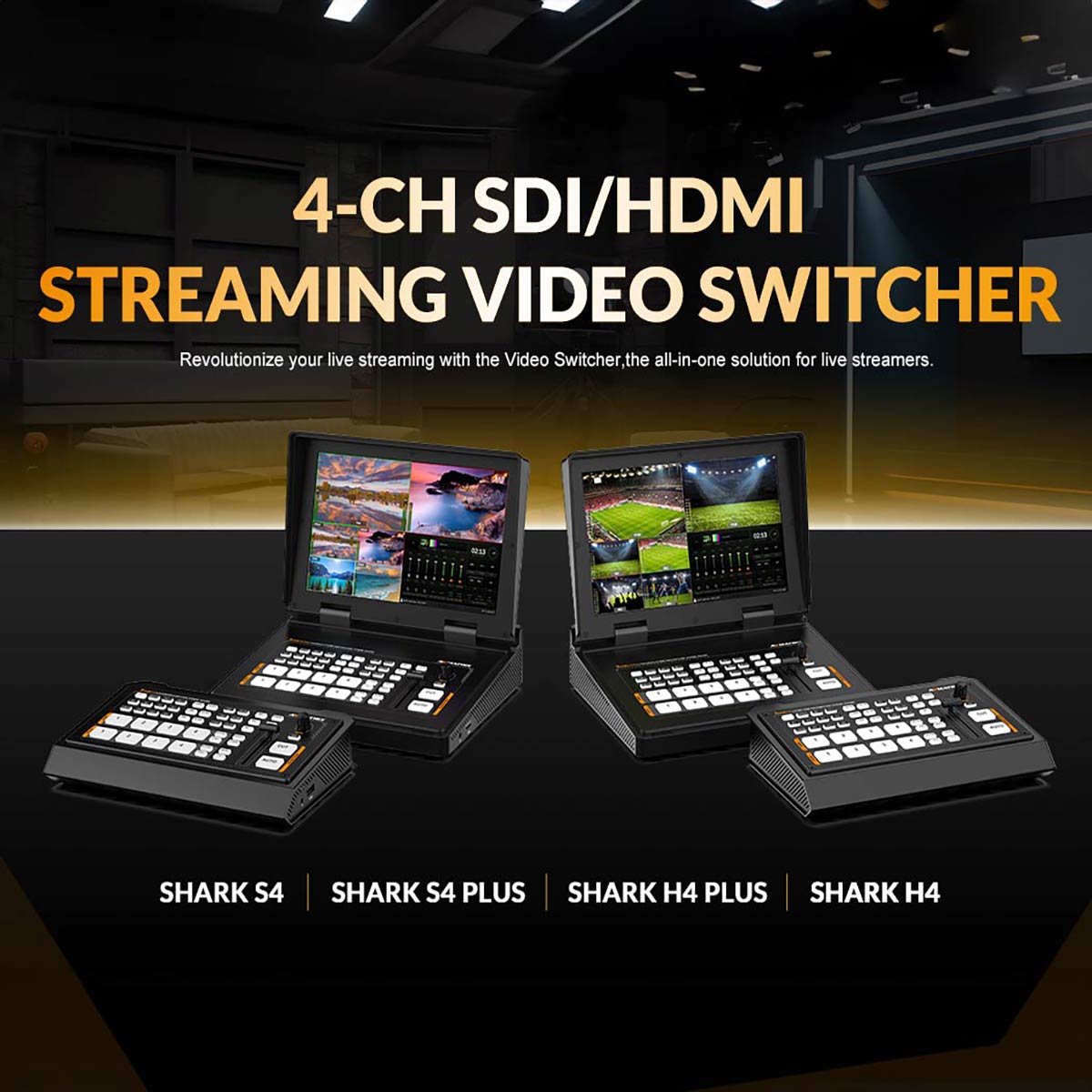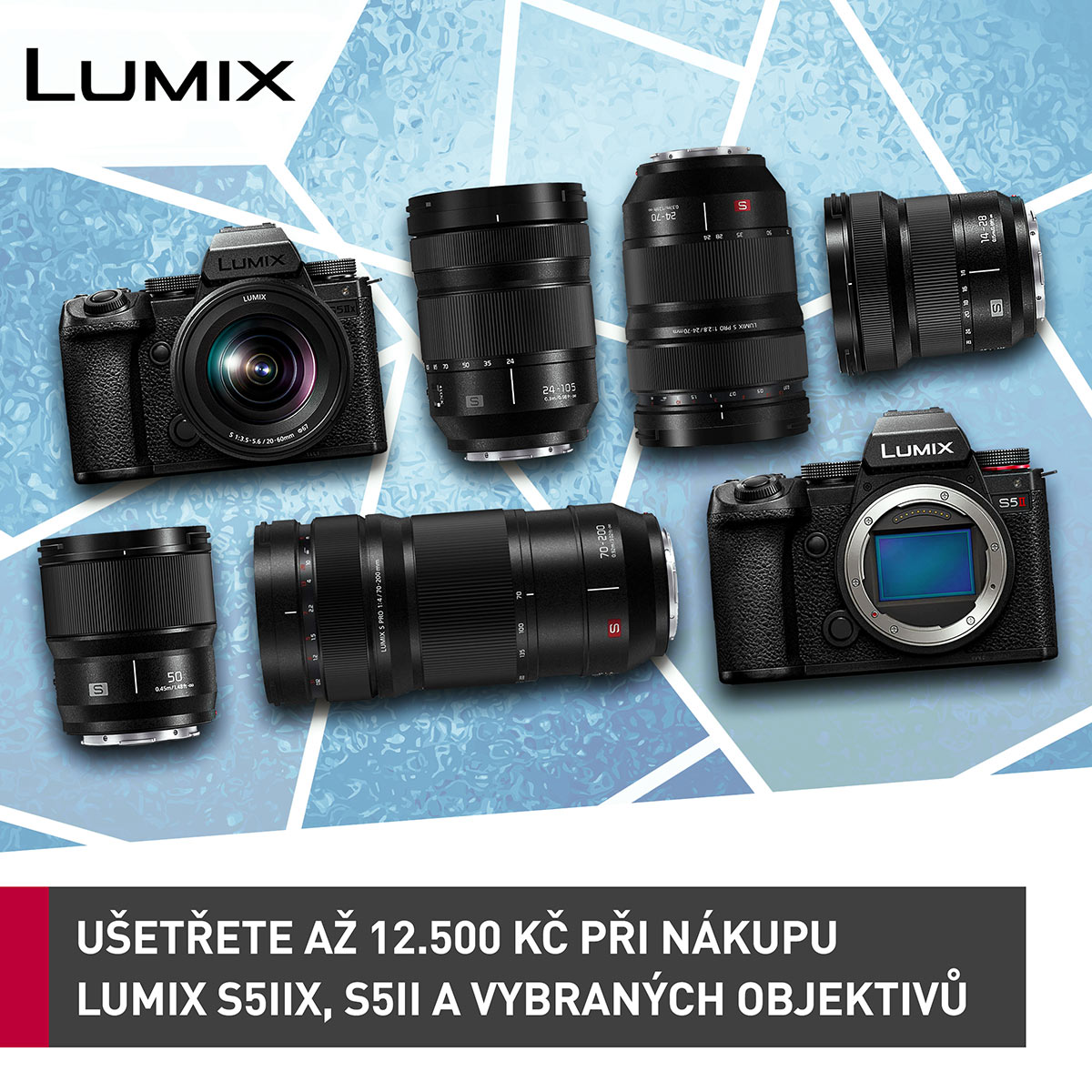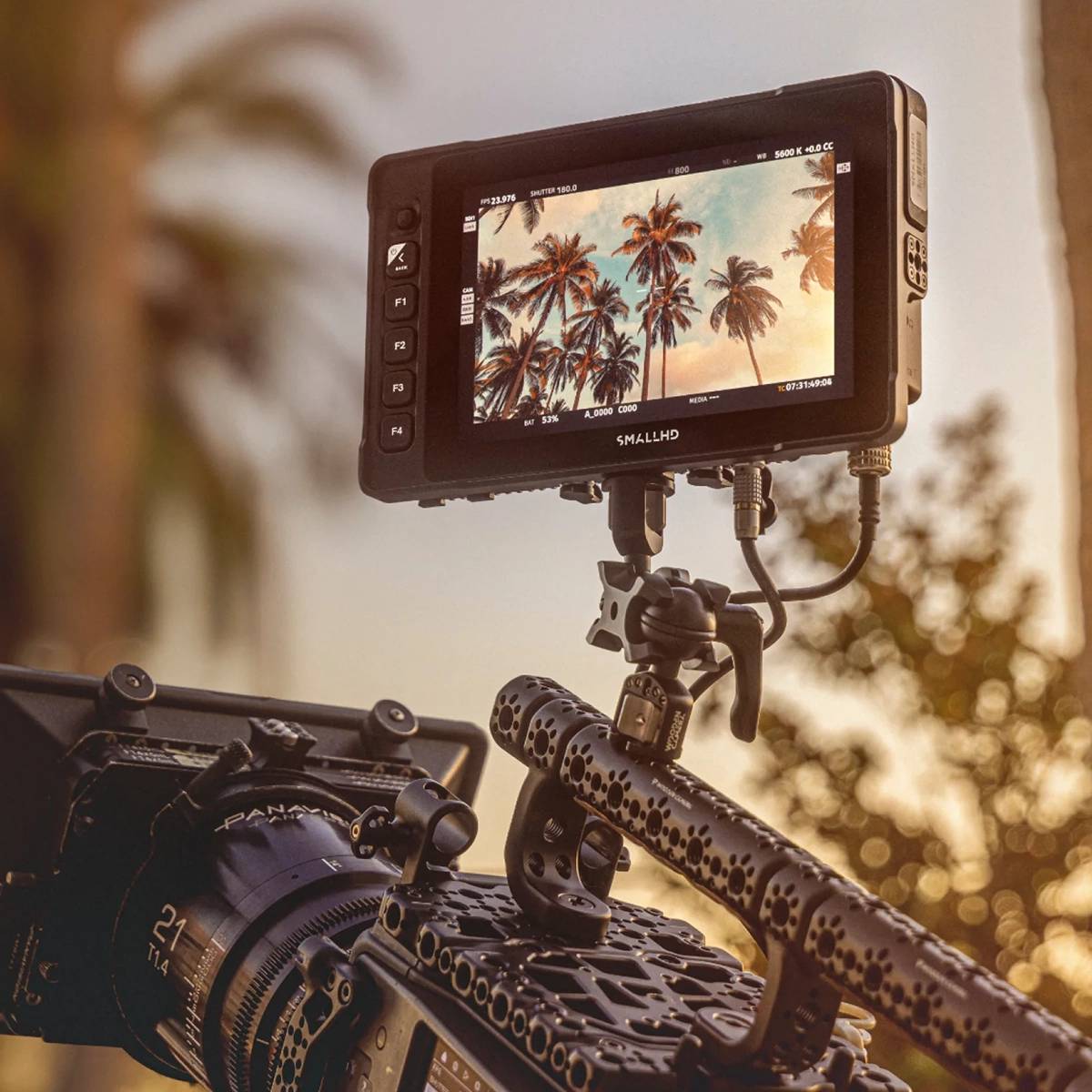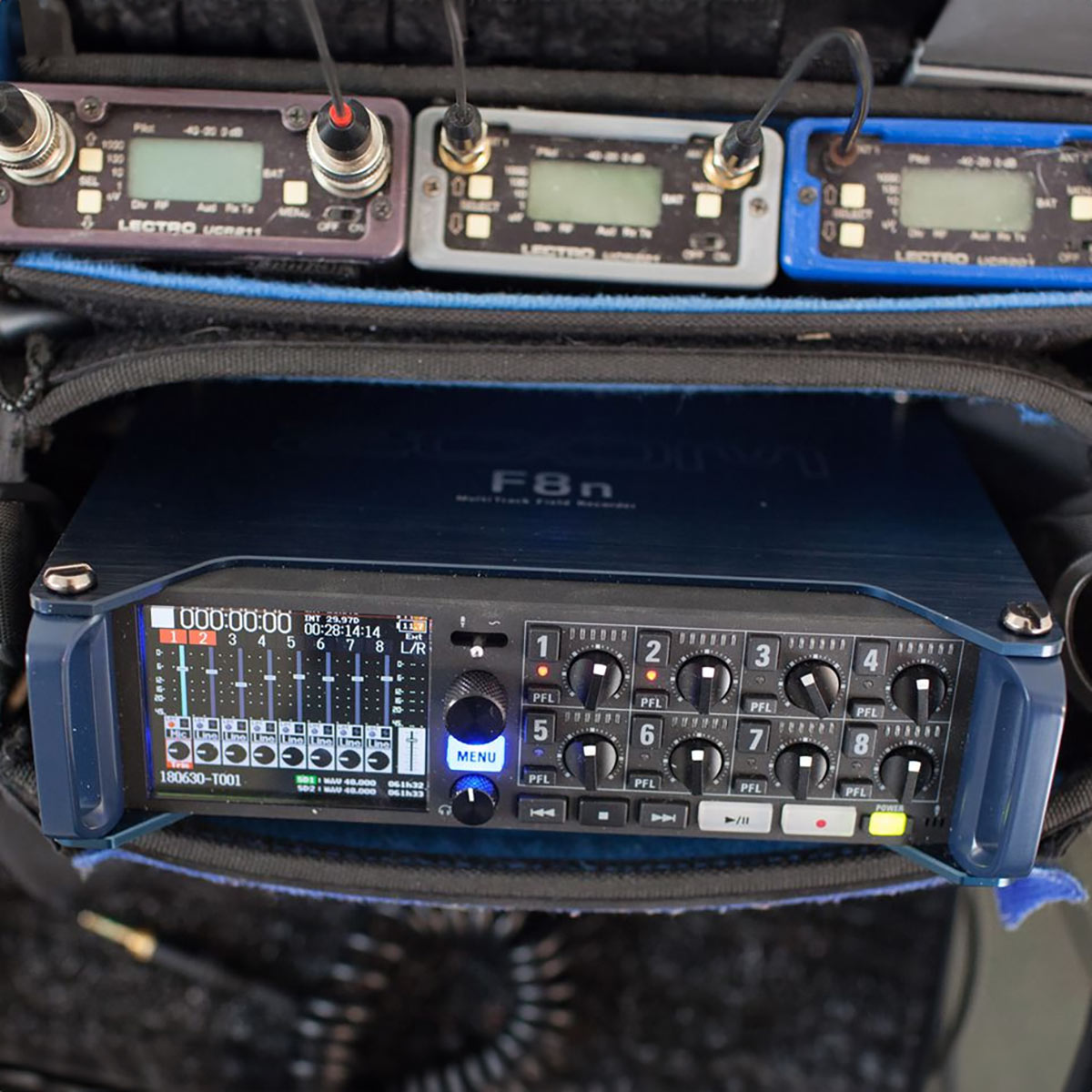
- Search
-
Login
-
0
ComparisonAdd products to compare, then they will appear here and you can compare parameters.
-
0
0 €Nothing in the basket.
Blog
In the offer of broadcast brand products AVMATRIX the Shark line of new portable HD overheads offered by in a six-channel version (S6) and several four-channel variants (H4, H4 Plus, S4 a S4 Plus: "H" models are equipped with 4x HDMI inputs, "S" versions have 2x 3G-SDI and 2x HDMI, "Plus" is in the name of the alternatives equipped with 10.1" FHD display). The highest model S6 with integrated 5" LCD is equipped with 4x 3G-SDI and 2x HDMI inputs and outputs 2x 3G-SDI, 1x HDMI PGM, 2x 3G-SDI (aux) , 1x HDMI (multiview) and 1x USB-C. It offers streaming (LAN and USB; RTMP/RTSP/SRT) and recording (SD cards, external USB drives; M-JPEG up to 1080p60), high quality keying, blending effects (incl. control of PTZ cameras (VISCA, VISCA over IP, Pelco D/P and ONVIF over LAN/RS-232/RS-422/RS-485), GPIO port for signaling and more... Despite the rich variety of functions, it boasts compact dimensions (238.5x168.2x47.5 mm, 1450 g and 2370 g including accessories) and a very reasonable price.

Effective immediately, DJI is reducing the prices of the DJI Mini 3 Pro/DJI Mini 3 Pro (non-RC)/DJI Mini 3 Pro (DJI RC) and DJI Osmo Action 3 Standard Combo/DJI Osmo Action 3 Adventure Combo action cameras. Popular kit DJI Mini 3 Pro (DJI RC) is now on sale for 759 EUR including VAT (from the original 999 EUR!), the kits DJI Mini 3 Pro a DJI Mini 3 Pro (without RC) are now available for 639 EUR and 559 EUR excluding VAT, DJI Osmo Action 3 Standard Combo a DJI Osmo Action 3 Adventure Combo will now cost €249 and €349 including VAT.

Pouze do 19. 3. 2024 platí slevové kupóny nabízející slevu až 12.500 Kč vč. DPH na těla a sety Panasonic LUMIX S5M2 a S5M2X a na vybrané objektivy LUMIX S a LUMIX S Pro:
Sleva 12.500,- s kódem LUMIXS12K5:
- Panasonic LUMIX S5M2XM (S5M2X + R24105)
- Panasonic LUMIX S5M2M (S5M2 + R24105)
- Panasonic LUMIX S Pro 50 mm f/1,4
- Panasonic LUMIX S Pro 70-200 mm f/2,8 O.I.S.
Sleva 10.000,- s kódem LUMIXS10K:
- Panasonic LUMIX DC-S5M2XR (S5M2X + R1428)
- Panasonic LUMIX DC-S5M2XW (S5M2X + R2060 + S50)
- Panasonic LUMIX DC-S5M2W (S5M2 + R2060 + S50)
- Panasonic LUMIX DC-S5M2K (S5M2 + R2060)
- Panasonic LUMIX S Pro 70-200 mm f/4,0 OIS
- Panasonic LUMIX S PRO 24-70 mm f/2,8
- Panasonic LUMIX S Pro 16-35 mm f/4
Sleva 7.500,- s kódem LUMIXS7K5:
- Panasonic LUMIX DC-S5M2XK (S5M2X + R2060)
- Panasonic LUMIX DC-S5M2XC (S5M2X + S50)
- Panasonic LUMIX DC-S5M2X (tělo)
- Panasonic LUMIX DC-S5M2C (S5M2 + S50)
- Panasonic LUMIX S 24-105 mm f/4,0 Macro OIS
Sleva 5.000,- s kódem LUMIXS5K:
- Panasonic LUMIX DC-S5M2 (tělo)
- Panasonic LUMIX S 70-300 mm f/4,5-5,6 Macro O.I.S.
- Panasonic LUMIX S 24 mm f/1,8
- Panasonic LUMIX S 18 mm f/1,8

SmallHD launches new reference 7" camera monitor Ultra 7! It is based on the popular 703 UltraBright model, but adds more processing power, an improved IP53-rated body, 6G-SDI input, better planned integration with Teradek Bolt transmitters (variants with integrated Teradek Bolt 6 products will be available in the spring), and the ability to remotely control ARRI, Sony and RED cameras (over Ethernet/USB interfaces; requires optional license). the 7" QD-LED side-lit panel impresses with 2300 cd/m² brightness and excellent colour accuracy (10-bit, 4:2:2, DCI-P3). The manufacturer also offers a new foldable sun visor with magnetic attachment and compatibility with Wooden Camera Micro Battery Plate (aluminum design, resettable fuse).

We now offer the world-famous zoom audio recordersfrom the miniature F1 and F2, through the classic handheld models H4n and H5 to the luxuriously equipped 8-channel/10-track Zoom F8n Pro!


